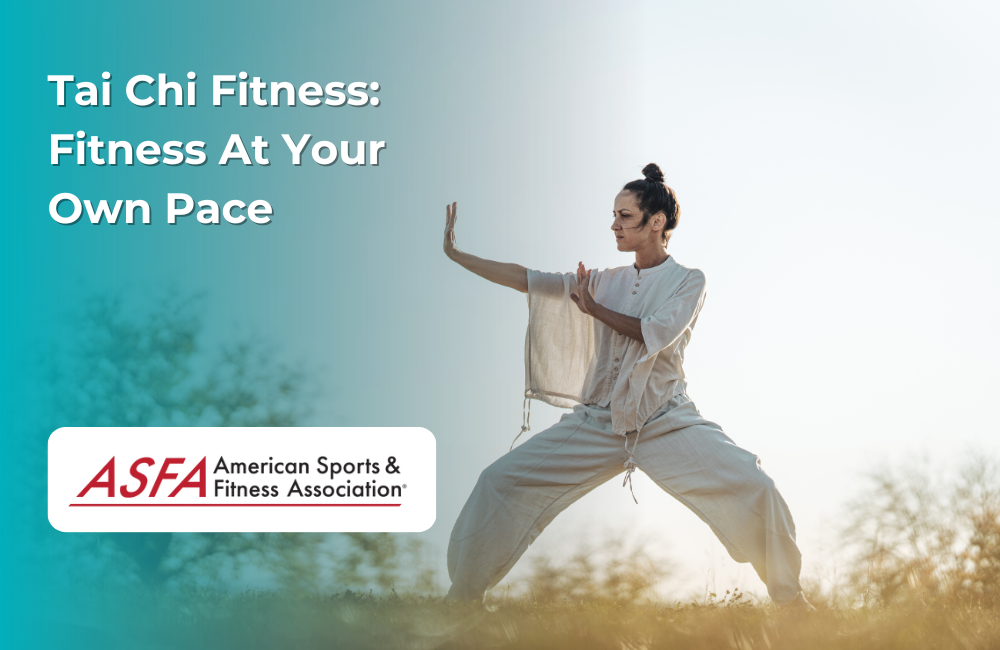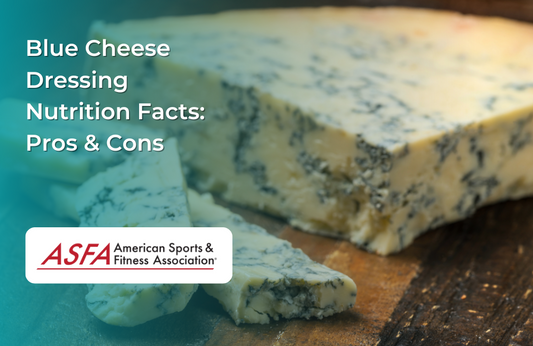Tai Chi has long been celebrated as a gentle, mindful form of exercise that brings together physical strength, balance, flexibility, and mental clarity. Often referred to as “meditation in motion,” Tai Chi is a practice that can be enjoyed by individuals of all ages and fitness levels, from young athletes seeking to enhance flexibility to seniors looking to maintain balance and strength. What makes Tai Chi truly unique is its adaptability and low-impact nature, allowing participants to perform the movements at their own pace while still experiencing a challenging workout.
In this article, we will explore the many aspects of Tai Chi fitness, its health benefits for different populations, especially seniors, and how it can be integrated into a lifelong fitness routine. Whether you’re looking to improve your physical health, mental focus, or overall well-being, Tai Chi offers a well-rounded, holistic approach to fitness.
What is Tai Chi?
Tai Chi is an ancient Chinese martial art that has gracefully evolved into a low-impact, slow-moving exercise combining physical movement, deep breathing, and mental focus. Often referred to as “meditation in motion,” Tai Chi integrates physical movement with mental awareness, aiming to balance and concentrate the body’s qi (vital energy). This mind-body practice is celebrated for its ability to enhance both mental and physical health, making it accessible to people of all ages and backgrounds. Whether you seek to improve your physical health or mental clarity, practicing Tai Chi offers a holistic approach to well-being.
The Nature of Tai Chi Fitness: Gentle but Powerful
Tai Chi originates from traditional Chinese martial arts, but unlike other forms of martial arts, it is not practiced for self-defense, sparring, or combat. Instead, Tai Chi focuses on slow, controlled movements that are designed to promote balance, strength, and flexibility. The practice involves a series of postures that flow seamlessly from one to the next, encouraging the body to move in a deliberate and mindful way.
Tai Chi forms are a crucial component of a Tai Chi class, varying in complexity and style. Short forms consist of a dozen or fewer movements, while long forms can include hundreds, catering to different skill levels, particularly for beginners or those in less favorable physical condition.
Despite its gentle nature, Tai Chi can be a powerful workout. Holding and transitioning between postures requires strength, particularly in the legs, and the flowing movements challenge balance and coordination. Many practitioners find that, although the movements appear slow and easy, Tai Chi provides a deep, full-body workout that can help build muscle tone, enhance flexibility, and improve overall physical function.
Tai Chi: A Form of Martial Arts Fitness
Tai Chi is often classified as a form of martial arts fitness due to its origins, but it is unlike more vigorous martial arts practices like karate or judo. Instead of focusing on speed, power, or combat, Tai Chi emphasizes internal strength, balance, and control. Practitioners learn to move with intention, developing their ability to focus both mentally and physically on each movement.
Because of its low-impact nature, Tai Chi is one of the most accessible forms of martial arts fitness. The movements are performed slowly, which reduces the risk of injury while still providing a challenge for the muscles and joints. Tai Chi also incorporates controlled breathing, helping practitioners to remain calm, focused, and in control of their bodies. This aspect of Tai Chi contributes to its reputation as a practice that is not only good for the body but also for the mind. To learn Tai Chi effectively, beginners should consider observing classes and connecting with experienced instructors to enhance their learning experience.
Getting Started with Tai Chi
Starting Tai Chi is both easy and accessible, making it an excellent choice for beginners. The first step is to find a qualified Tai Chi instructor who can guide you through the proper techniques and principles. Tai Chi classes are often available at local community centers, martial arts schools, or even online. When attending a Tai Chi class, it’s important to dress comfortably in non-restrictive clothing and footwear. Informing your instructor about any health issues, such as knee problems, allows them to adapt the movements to suit your needs. A proper warm-up is crucial before beginning your Tai Chi practice, which can include simple movements like standing with feet hips-width apart and visualizing your legs as the trunk of a tree.
Tai Chi Techniques and Principles
Tai Chi techniques and principles are deeply rooted in the concept of balance and harmony between the body and mind. The practice emphasizes relaxation, controlled breathing, and deliberate movement. Each Tai Chi form involves flowing motions that engage the entire body, focusing on deep, slow breaths. Practicing Tai Chi requires moving with intention and awareness, demanding focus and concentration. These techniques and principles can be adapted to suit different fitness levels and abilities, making Tai Chi an inclusive practice for people of all ages and backgrounds.
The Physical Benefits of Tai Chi: Strength, Flexibility, and Balance
One of the key benefits of Tai Chi is its ability to improve strength, particularly in the core and lower body. The slow, controlled movements require practitioners to engage their muscles deeply, especially when holding positions or moving through postures that challenge balance. This engagement strengthens the legs, hips, and core, which are essential for stability and mobility.
Additionally, tai chi's effect on health conditions such as heart failure, chronic obstructive pulmonary disease (COPD), and Parkinson's disease has been noted, though further research is needed to fully understand its impact.
Improved Flexibility through Tai Chi Practice
Tai Chi is also an excellent practice for improving flexibility. The flowing, stretching movements allow the muscles and joints to move through their full range of motion, increasing elasticity and flexibility over time. Improved flexibility can enhance performance in other sports and physical activities, as well as make daily tasks easier and more comfortable. Flexibility training is essential for maintaining joint health and preventing injuries, particularly as we age.
Many Tai Chi instructors have completed certifications in flexibility or stretching, and they often incorporate these principles into their routines to help students achieve better range of motion. Flexibility is a cornerstone of overall physical health, and Tai Chi offers a gentle, sustainable way to maintain and improve it throughout life.
Balance and Stability
For individuals of all ages, balance is a critical component of physical health. Tai Chi's slow, deliberate movements challenge the body's balance and coordination, helping to strengthen the muscles that support stability. This is particularly beneficial for seniors, as maintaining good balance can reduce the risk of falls and related injuries.
Tai Chi's focus on balance is one of the reasons it is so popular among older adults. It helps to strengthen the legs, hips, and core, all of which are necessary for staying steady on your feet. The practice also enhances proprioception (the body's sense of where it is in space), which further improves balance and coordination.
Tai Chi for Seniors: Fitness for Life
Exercise becomes more challenging as we age, particularly due to decreased muscle mass, balance issues, and joint stiffness. However, maintaining an active lifestyle is crucial for overall health and well-being, especially in older adulthood. Tai Chi offers a perfect solution for seniors who want to stay active without putting undue stress on their bodies. Additionally, studies suggest that Tai Chi may improve exercise capacity, lung function, and overall quality of life for individuals suffering from chronic obstructive pulmonary disease (COPD).
Gentle on the Joints
Tai Chi is a low-impact exercise, which means it does not place excessive pressure on the joints. This makes it a safe and effective form of exercise for individuals with arthritis, joint pain, or other musculoskeletal issues. The slow, flowing movements allow for gentle stretching and strengthening, helping to improve joint function without causing discomfort.
Improving Muscle Tone and Strength
Although Tai Chi is gentle, it is still a strength-building practice. The movements require practitioners to engage their muscles, particularly in the legs, as they hold positions and transition from one posture to another. Over time, this helps to improve muscle tone and increase strength, which is essential for maintaining mobility and independence in older adults.
Enhanced Balance and Fall Prevention
Falls are a significant concern for seniors, as they can lead to serious injuries such as fractures or head trauma. Tai Chi is widely recognized as one of the best exercises for improving balance and preventing falls. The practice strengthens the muscles that support balance, improves coordination, and enhances awareness of body movement. For seniors, this means a reduced risk of falling and greater confidence in their ability to move safely.
Mental and Emotional Benefits for Seniors
In addition to the physical benefits, Tai Chi also provides mental and emotional advantages for older adults. The focus on breathing and mindfulness helps to reduce stress and anxiety, promoting a sense of calm and well-being. Many seniors find that Tai Chi improves their overall mood, reduces feelings of isolation, and enhances their quality of life.
Breathing Techniques and Mental Focus in Tai Chi
Breathing is a central component of Tai Chi practice. Each movement is synchronized with the breath, encouraging deep, controlled breathing that helps to oxygenate the body and calm the mind. This focus on breath control enhances the practice’s meditative quality, allowing practitioners to enter a state of mindfulness. Research studies examining various health conditions, such as fibromyalgia, chronic obstructive pulmonary disease, and knee osteoarthritis, have structured tai chi interventions with specific durations, frequencies, and session lengths, noting significant, although sometimes limited, benefits in improving quality of life and addressing pain and other symptoms.
The breathing techniques used in Tai Chi help to:
-
Improve lung function: Deep breathing increases lung capacity, helping the body take in more oxygen and expel more carbon dioxide.
-
Reduce stress: The calming effect of controlled breathing can lower cortisol levels, reducing stress and anxiety.
-
Enhance focus: Concentrating on the breath helps to center the mind, improving focus and mental clarity.
This mental aspect of Tai Chi is what sets it apart from many other forms of exercise. It not only strengthens the body but also sharpens the mind, making it a holistic practice that nurtures both physical and mental health.
The Role of Qi in Tai Chi
Central to Tai Chi is the concept of qi, a vital energy that flows through the body’s meridian channels. Practicing Tai Chi aims to restore balance to the flow of qi, promoting overall health and well-being. The gentle, repetitive movements of Tai Chi engage both the body and mind, helping to improve the flow of qi. Additionally, Tai Chi’s focus on relaxation and stress reduction further enhances the flow of qi. This vital energy is believed to play a crucial role in maintaining both physical and mental health, making the practice of Tai Chi a powerful tool for holistic wellness.
Customizing Tai Chi to Fit Your Needs
One of the greatest advantages of Tai Chi is its adaptability. Whether you’re an athlete looking to improve flexibility, a senior seeking balance, or someone recovering from an injury, Tai Chi can be modified to suit your individual fitness level and goals. Each movement can be adjusted to make it easier or more challenging, allowing practitioners to progress at their own pace. Tai chi interventions can also be customized to suit individual fitness levels and health conditions, such as fibromyalgia, chronic obstructive pulmonary disease, and knee osteoarthritis.
Because Tai Chi is low-impact, it is also an excellent practice for those with limited mobility or chronic pain. The gentle nature of the movements makes it accessible to nearly everyone, regardless of fitness level or physical condition.
Finding a Tai Chi Class or Instructor
Finding the right Tai Chi class or instructor is essential for learning and practicing Tai Chi effectively. You can locate Tai Chi classes at local community centers, martial arts schools, or online platforms. It’s important to choose a qualified Tai Chi instructor who can teach you the proper techniques and principles. Asking for referrals from friends or family members who practice Tai Chi can also be helpful. When selecting a Tai Chi class or instructor, consider factors such as their experience, qualifications, and teaching style to ensure a good fit for your needs.
Practicing Tai Chi at Home
Practicing Tai Chi at home is a wonderful way to continue your practice and enhance your skills. You can follow along with online classes or DVDs to guide your practice. It’s essential to find a quiet and peaceful space for your Tai Chi practice and to establish a consistent routine by practicing at the same time every day. Practicing Tai Chi with a partner or joining a local Tai Chi group can also help you stay motivated and engaged. Developing a regular Tai Chi practice at home can significantly improve your physical and mental health, making it a valuable addition to your daily routine.
Becoming a Certified Tai Chi Instructors
If you're passionate about Tai Chi and want to share its benefits with others, becoming a certified Tai Chi fitness instructor is a rewarding path. Certification programs will provide you with a comprehensive understanding of Tai Chi's movements, breathing techniques, and philosophy, as well as how to teach these to students of all levels.
As a Tai Chi instructor, you'll have the opportunity to help others improve their strength, flexibility, balance, and mental well-being. Whether you choose to teach classes for seniors, athletes, or beginners, you'll be promoting a practice that can enhance the quality of life for people of all ages.
Click the link below to learn more about becoming a Certified Tai Chi Fitness Instructor!





